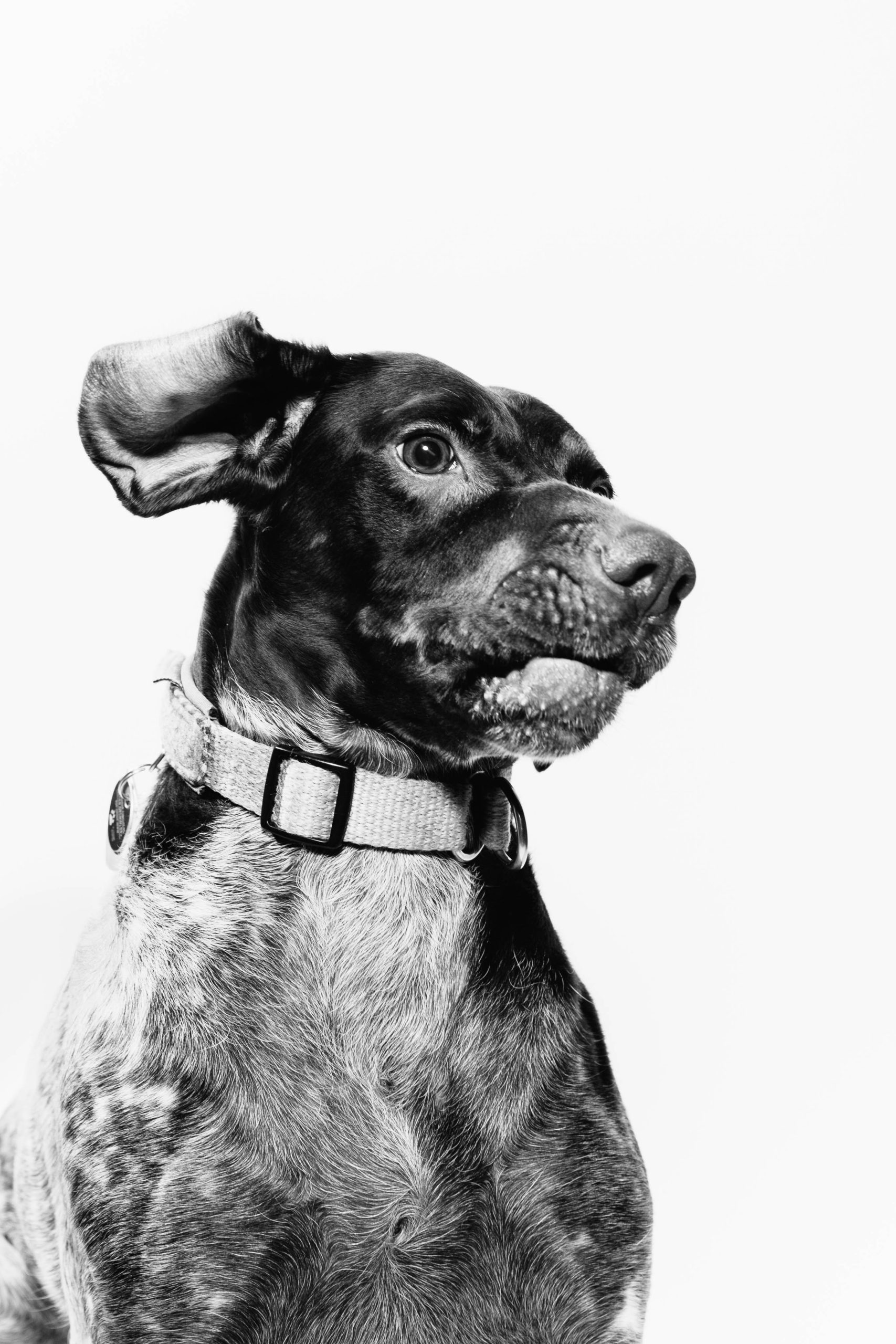The Versatile German Shorthaired Pointer: Unveiling Physical Characteristics, Hunting Prowess, and Family Appeal
The German Shorthaired Pointer: A Versatile Hunting Companion with striking physical attributes and a friendly, outgoing nature, making it an excellent choice as a family pet and hunting partner.
Historical Development and Heritage
The historical development and heritage of the German Shorthaired Pointer (GSP) is a fascinating journey that began in the 17th century. This versatile and elegant breed was meticulously developed through the deliberate crossbreeding of the Spanish pointer and the Hanoverian hound, resulting in the creation of a remarkable hunting companion. The breed’s lineage is deeply intertwined with its role as a multipurpose hunting dog, perfectly suited for navigating both land and water terrains with exceptional skill and agility.
In the 19th century, the German Shorthaired Pointer found its definitive form in Germany, where it was selectively bred to embody the ideal combination of athleticism, intelligence, and versatility. The breed’s heritage is a testament to its prowess as a gun dog, excelling in the pursuit of larger and more challenging game. Whether it’s pointing, trailing, or retrieving, the GSP’s historical development has equipped it with the skills and instincts necessary to thrive in the demanding and dynamic world of hunting. Additionally, its adventurous spirit and unwavering loyalty make it not only a reliable hunting companion but also a cherished and active member of the family, reflecting the breed’s rich heritage as an all-round companion for outdoor enthusiasts and hunters alike [2].
Physical Attributes and Appearance
In addition to their athletic build and striking appearance, German Shorthaired Pointers have a notable coat that is short, dense, and flat, with a dense undercoat. This unique coat not only provides protection from varying weather conditions but also requires minimal grooming, making them relatively low-maintenance in the grooming department. The coat comes in various color combinations, including liver and white, solid liver, liver roan, and liver and white ticked, adding to the breed’s visual appeal.
Furthermore, their webbed feet are a remarkable physical attribute that sets them apart from other breeds. This distinctive characteristic allows them to be proficient swimmers, making them adept at hunting waterfowl as well as land game. The webbing between their toes provides them with excellent propulsion in the water, making them versatile and effective hunting companions in different terrains. For instance, when they are out in the field, their webbed feet enable them to navigate through marshes, ponds, and other wetland areas with ease, showcasing their adaptability and endurance in various hunting environments.
Another significant physical characteristic of the German Shorthaired Pointer is their eyes. Typically, they have expressive brown eyes that exude alertness and intelligence. This keen and attentive gaze is a reflection of the breed’s inherent focus and high level of energy, which are essential traits for their role as hunting dogs. Their eyes not only contribute to their appearance but also serve as windows into their lively and enthusiastic nature, making them endearing companions for both hunting and family life.
In summary, the physical attributes and appearance of the German Shorthaired Pointer are not only visually striking but also purposeful, enhancing their capabilities as versatile hunting companions and family pets [3].
Versatility in Hunting and Sporting Roles
German Shorthaired Pointers (GSPs) are known for their exceptional versatility in hunting and sporting roles, making them invaluable companions for outdoor enthusiasts and hunters. Their proficiency in a wide range of hunting activities, including trailing, retrieving, and pointing, underscores their remarkable skills as gun dogs. For example, GSPs exhibit remarkable pointing abilities, which involve freezing in a pointing position upon detecting the presence of game, allowing hunters to easily locate their target. This distinctive trait has solidified their reputation as exceptional hunting partners, especially in upland bird hunting scenarios, where their keen sense of smell and unwavering focus come into play.
Moreover, the intelligence and trainability of GSPs make them well-suited for various dog sports, showcasing their adaptability and agility. For instance, GSPs excel in agility competitions, where they navigate obstacle courses with precision and speed, demonstrating their athleticism and responsiveness to commands. Additionally, their natural affinity for water and their webbed feet enable them to thrive in dock diving competitions, where they showcase their impressive swimming abilities and fearlessness in leaping from a dock into the water. This versatility in sporting roles not only speaks to their prowess as hunting dogs but also highlights their potential as engaging and high-performing competitors in various dog sports.
The combination of their hunting prowess, athleticism, and adaptability in sporting activities positions GSPs as exceptional companions for individuals and families with an active lifestyle. Their ability to seamlessly transition between the roles of a dedicated hunting partner and an enthusiastic participant in dog sports underscores their remarkable versatility, making them cherished members of households that value outdoor adventures and engaging activities.
 Health Considerations and Well-being
Health Considerations and Well-being
In addition to the hereditary disorders such as hypothyroidism, hip dysplasia, and cancerous lesions, German Shorthaired Pointers may also be prone to bloat, a serious condition that requires immediate veterinary attention. This condition can occur when the dog’s stomach fills with gas, fluid, or food, causing it to expand and potentially twist on itself, leading to severe discomfort and life-threatening consequences if not treated promptly. Therefore, GSP owners should be vigilant for symptoms such as restlessness, unproductive vomiting, and a swollen abdomen, and seek immediate veterinary care if these signs are observed.
Furthermore, the breed’s exercise requirements play a crucial role in maintaining their overall well-being. German Shorthaired Pointers are highly energetic and require ample physical activity to stay healthy and prevent behavioral issues. Regular exercise not only helps to keep them physically fit but also aids in channeling their energy in a positive way, reducing the likelihood of destructive behaviors. Engaging in activities such as running, hiking, or playing interactive games provides mental stimulation and helps prevent boredom, contributing to the dog’s overall happiness and well-being.
Moreover, proper nutrition is essential for the health and longevity of German Shorthaired Pointers. A balanced diet, consisting of high-quality dog food that meets their specific nutritional needs, is crucial to support their active lifestyle and maintain optimal body condition. Additionally, regular veterinary check-ups are imperative to monitor the dog’s health, address any emerging concerns, and ensure timely preventive care measures are in place to promote a long and healthy life for these beloved companions. By prioritizing responsible breeding, regular exercise, proper nutrition, and routine veterinary care, GSP owners can help safeguard the well-being of their loyal and affectionate canine companions [3].
Behavior and Adaptability
The behavior and adaptability of the German Shorthaired Pointer (GSP) make them exceptional family pets and companions. Their friendly and outgoing nature is evident in the strong bonds they form with their human companions, a characteristic that endears them to families seeking a loyal and affectionate pet. For example, GSPs are often seen as excellent playmates for children due to their gentle and friendly demeanor, making them wonderful additions to households with kids. Additionally, when properly socialized, they demonstrate a remarkable ability to get along with other pets, fostering a harmonious environment within the home.
Moreover, the adaptability of GSPs extends to apartment living, making them suitable for various living arrangements. Their low sensitivity level allows them to acclimate well to different environments and living conditions. This adaptability is further enhanced by their affectionate nature, as they thrive in close proximity to their families, regardless of the living space. As a result, GSPs are an ideal choice for families living in urban settings or apartments, seeking a loving and adaptable canine companion.
Furthermore, the intelligence, trainability, and playful disposition of GSPs make them an excellent choice for novice dog owners. Their eagerness to learn and please their owners, combined with a potential for playfulness, creates an enriching experience for both the pet and the family. Their adaptability and responsiveness to training make them an excellent fit for families looking for a versatile and engaging pet that can easily integrate into their lifestyle and daily activities.
Frequently Asked Questions (FAQs)
- What are the physical characteristics of the German Shorthaired Pointer? German Shorthaired Pointers are medium to large-sized dogs with an athletic build, sleek coat, and distinctive features such as webbed feet, moderately long floppy ears, and a regal stance. They come in unique color combinations, commonly liver and white.
- What is the history and origin of the German Shorthaired Pointer breed? The GSP originated in the 17th century through the crossbreeding of the Spanish pointer and the Hanoverian hound. It was developed in Germany as a versatile hunting dog capable of working on both land and water, with a heritage deeply rooted in its role as a versatile gun dog.
- What are the distinctive features and appearance of the German Shorthaired Pointer? GSPs have a regal stance, webbed feet, and moderately long floppy ears set high on the head, making them a striking and elegant breed. Their strong legs, great endurance, and longer, broad, and strong muzzle contribute to their effectiveness as a versatile hunting and retrieving dog.
- How energetic and versatile is the German Shorthaired Pointer as a hunting dog? German Shorthaired Pointers are known for their proficiency in various hunting roles, including trailing, retrieving, and pointing, and they excel in dog sports like agility, dock diving, and obedience. Their athleticism and high energy level make them excellent hunting partners and family companions.
- What are the common health concerns and lifespan of the German Shorthaired Pointer? GSPs are prone to hereditary disorders such as hypothyroidism, hip dysplasia, and cancerous lesions, and have a median lifespan of 9-12 years. They require significant exercise to maintain their health and well-being, along with proper grooming, nutrition, and regular veterinary check-ups.
- How does the German Shorthaired Pointer behave as a family pet and with other animals? GSPs are known for their friendly and outgoing nature, forming strong bonds with their human companions and being generally good with children and other pets if properly socialized. They adapt well to apartment living, have a low sensitivity level, and are affectionate with their families.
- What are the exercise and grooming requirements for the German Shorthaired Pointer? GSPs require significant exercise to maintain their health and well-being, and they have a short, dense coat that is relatively low maintenance. Proper grooming, nutrition, and regular veterinary check-ups are essential for ensuring their overall health and longevity.
- What are the intelligence and trainability levels of the German Shorthaired Pointer? German Shorthaired Pointers are intelligent, easy to train, and have a potential for playfulness. They are suitable for novice owners and make excellent hunting partners and family companions.
- What are the dietary needs and feeding recommendations for the German Shorthaired Pointer? GSPs require 2-3 cups of high-quality dry food per day, divided into two meals, to meet their dietary needs and maintain their health and well-being.
- What are some interesting facts and notable achievements related to the German Shorthaired Pointer? The German Shorthaired Pointer is a versatile and elegant sporting breed that excels both as a hunting dog and a loving family companion. Renowned for its athleticism, intelligence, and friendly nature, the GSP has made notable achievements in various dog sports and has been recognized for its exceptional abilities.



